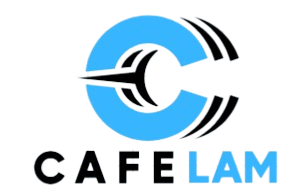Introduction
In an era where proactive planning is paramount, the concept of the “back casting room” has emerged as a pivotal tool for organizations aiming to shape their desired futures. Unlike traditional forecasting, which projects current trends forward, back casting starts with a defined future goal and works backward to identify the necessary steps to achieve it. The back casting room serves as the dedicated environment where this strategic process unfolds, fostering innovation, collaboration, and actionable planning.
Understanding the Back Casting Room
A back casting room is a specialized space designed to facilitate the back casting methodology. It provides a controlled environment equipped with tools and technologies that support teams in envisioning future scenarios and mapping out the pathways to reach them. This room is not just a physical space but a strategic hub where ideas converge, and future-oriented strategies are born.
Core Components of a Back Casting Room
- Visioning Tools: Central to the back casting room are tools that aid in defining and visualizing the desired future state. This includes vision boards, scenario planning software, and interactive displays that help teams articulate and refine their long-term goals.
- Collaborative Workspaces: The room is designed to encourage teamwork, featuring flexible seating arrangements, whiteboards, and breakout areas that facilitate group discussions and brainstorming sessions.
- Technological Infrastructure: Advanced technologies such as projectors, interactive screens, and specialized software (e.g., Miro, Lucidchart) are integrated to support dynamic planning and real-time collaboration. Data Analysis Tools: Access to data analytics platforms allows teams to assess current trends, identify gaps, and make informed decisions about the steps needed to achieve their future objectives.
- Monitoring and Feedback Systems: To ensure continuous progress, the room is equipped with tools for tracking milestones, gathering feedback, and adjusting plans as necessary.
Have you found this topic useful? For more informative content, check out the rest of our blog!
The Backcasting Process in Action
- Define the Desired Future: Teams begin by articulating a clear and compelling vision of the future they aim to achieve.
- Assess the Current State: A thorough analysis of the present situation is conducted to understand existing challenges and opportunities.
- Identify the Gaps: By comparing the current state with the desired future, teams pinpoint the gaps that need to be addressed.
- Develop Strategic Pathways: Actionable steps are outlined to bridge the identified gaps, including policy changes, technological investments, and capacity-building initiatives.
- Implement and Monitor: The strategies are put into action, with continuous monitoring to ensure alignment with the envisioned future.
Applications Across Industries
- Sustainability Planning: Organizations use back casting rooms to develop long-term sustainability strategies, focusing on environmental goals and resource management.
- Urban Development: City planners leverage these spaces to envision future urban landscapes and plan infrastructure projects accordingly.
- Corporate Strategy: Businesses employ backcasting to set long-term objectives. Such as market expansion or innovation targets, and devise strategies to achieve them.
- Education and Training: Educational institutions utilize back casting rooms to design curricula that prepare students for future industry demands.
Benefits of Utilizing a Back Casting Room
- Enhanced Strategic Alignment: By focusing on a shared vision, teams ensure that all efforts are directed toward common long-term goals.
- Proactive Problem-Solving: Identifying future challenges in advance allows for the development of solutions before issues arise.
- Improved Collaboration: The dedicated space fosters teamwork and collective ownership of strategies.
- Informed Decision-Making: Access to data and analytical tools supports evidence-based planning.
Challenges and Considerations
- Resource Intensive: Setting up a fully equipped back casting room requires investment in technology and training.
- Change Management: Shifting from traditional forecasting to backcasting may face resistance within organizations.
- Complexity in Execution: Mapping out detailed pathways from future goals to present actions can be complex and requires skilled facilitation.
Conclusion
The back casting room represents a transformative approach to strategic planning, enabling organizations to proactively shape their futures. By providing a dedicated space for envisioning, planning, and collaboration. It empowers teams to move beyond reactive measures and towards purposeful, goal-driven action. As the pace of change accelerates across industries. The back casting room stands as a vital tool for those committed to leading with foresight and intention.
And before you go, be sure to read through some of our other helpful posts!







